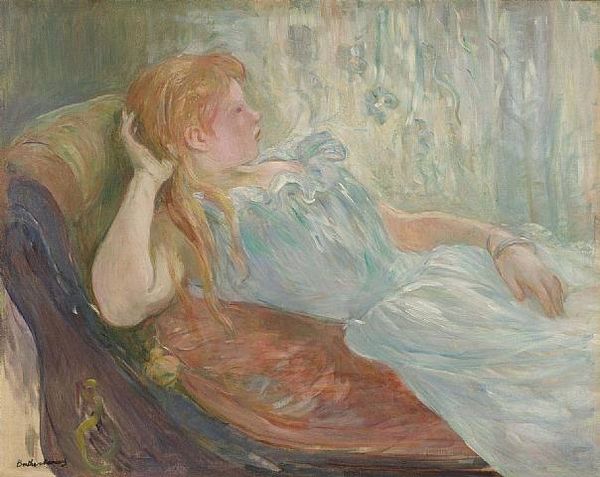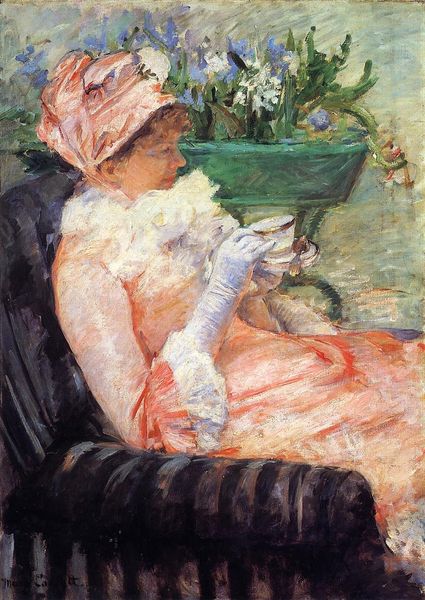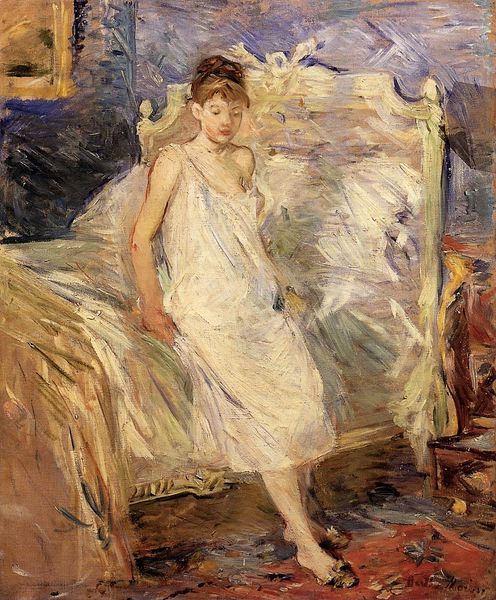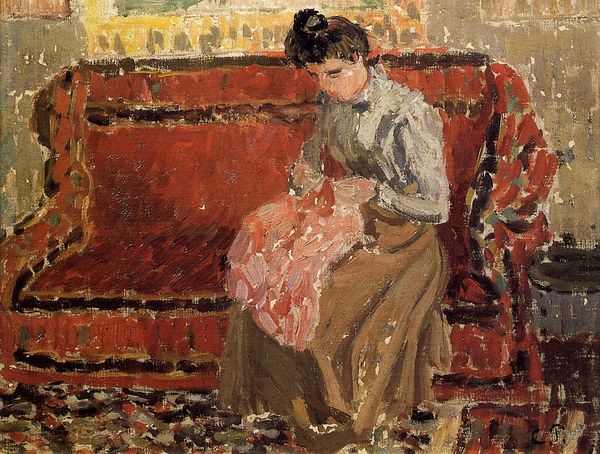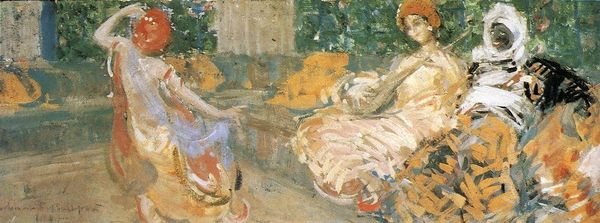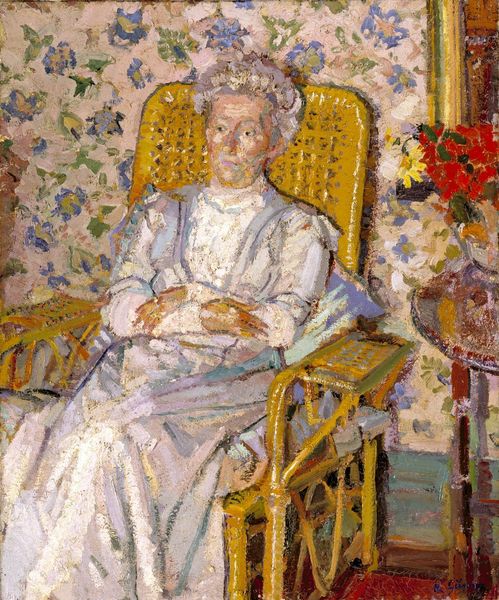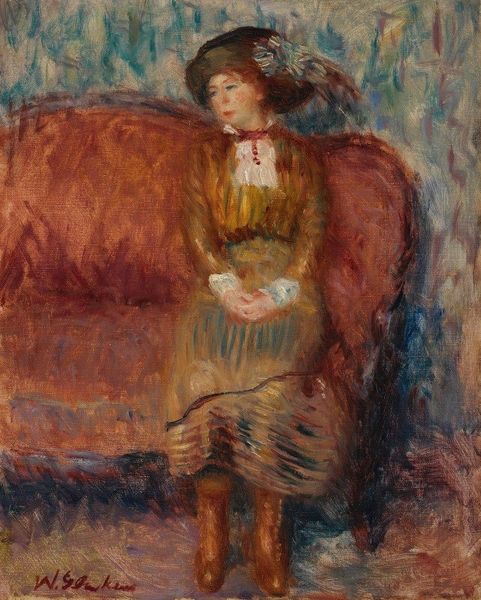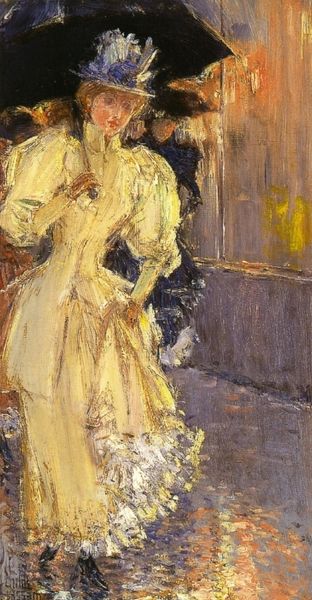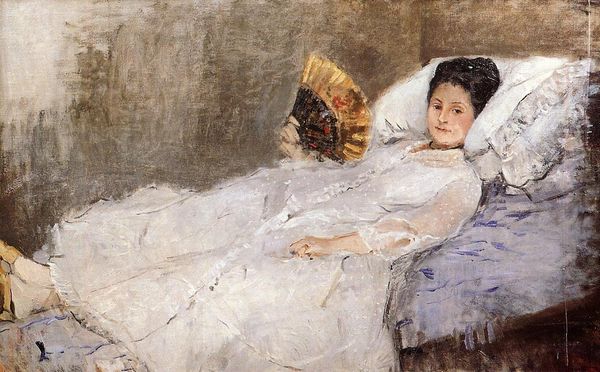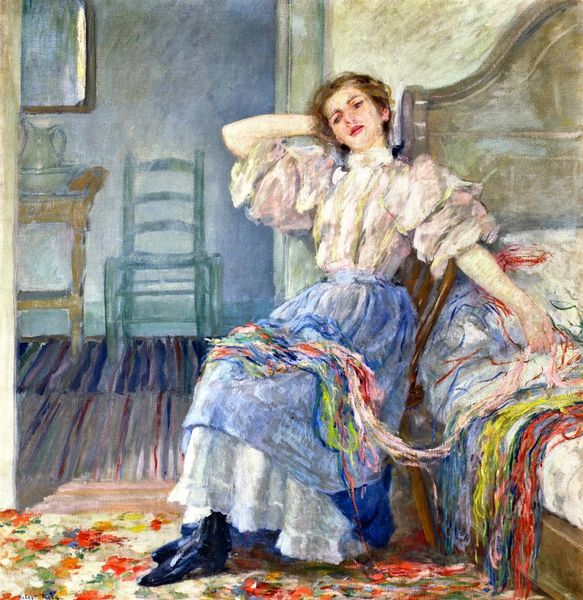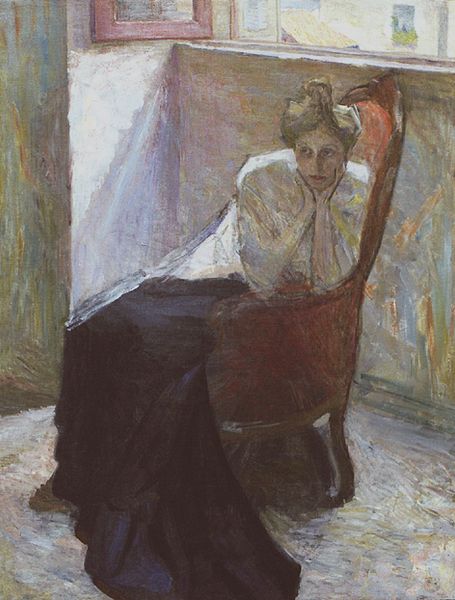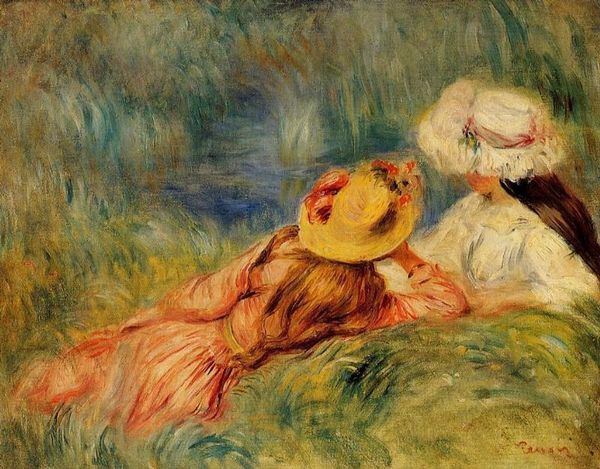
Copyright: Public domain
Curator: Matej Sternen's "On the Couch," completed around 1909, presents an intimate portrayal, rich with the stylistic gestures of early 20th-century painting. Editor: My first impression is one of languid repose, almost to the point of melancholy. The brushwork feels loose, the palette soft, adding to this air of wistful introspection. Curator: Indeed. Sternen's work frequently navigated the societal expectations of women and their representation within art, particularly how intimism, which prioritizes capturing private moments, interacts with social structures. Here, we see a woman captured in a state of relaxation or perhaps boredom, quite different from formal portraiture. Editor: I am drawn to the handling of the paint. See how the brushstrokes almost melt together, blurring the distinction between the figure, the couch, and the surrounding space? There is a clear interest in the tactile qualities of the oil paint. It suggests a focus not just on what is depicted but on the act of making itself, transforming material into form. Curator: That's perceptive. The materiality of the oil serves a purpose. Expressionist impulses began to gain traction in Europe, challenging classical norms, this painting can be read in the context of similar changes within artistic movements and exhibition spaces. Editor: The making feels incredibly present, doesn’t it? From a craftsperson’s viewpoint, observing his production of the couch, the model's garments is interesting in and of itself, almost drawing one into the working life implicit in this quiet, seemingly idle moment. What was his access to pigment and canvas like, how were the clothes made, etcetera. Curator: Precisely! It invites one to reflect not only on Sternen's individual vision but also the larger socio-cultural forces that shaped art's production and reception in the early 20th century. It challenges how art functions as both a commodity and as a reflection of social change. Editor: Thinking about materiality helps ground these grand art historical claims in labor, making Sternen's social sphere much more tangible. Curator: A painting, that through its medium, and the social context, evokes the start of modern life in visual form. Editor: In our attention to labor, to his own effort, but that embedded in everyday life, maybe, ultimately that brings one closer to those feelings of introspection in Sternen’s model, it now feels less passive than initially apprehended.
Comments
No comments
Be the first to comment and join the conversation on the ultimate creative platform.
